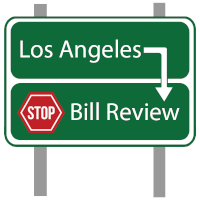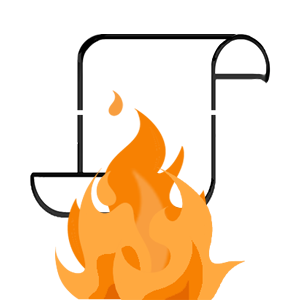Victory for Providers: Maximus Rules on CPT 99358

*Update: The 2021 OMFS updates drastically changed how E/M codes are billed. The article below only applies to DOS before March 1, 2021.*
In the past, DaisyBill has reported on many, many problems with Maximus Independent Bill Review (IBR) decisions for CPT code 99358. Today, we happily report that Maximus is no longer incorrectly applying its own proprietary interpretations of payment rules nor using the wrong fee schedule information.
The following statistics are for Maximus IBR decisions for dates of service in 2019:
CPT: 99358
Dates of Service: 2019
IBR Decision Count: 22
Uphold Decision: 3 (ruled against Provider)
Overturn Decision: 19 (ruled in favor of Provider)
Given the amount of additional work required to treat workers’ comp patients, it is extremely important for providers to understand the necessary mechanics to receive reimbursement for this additional time CPT code.
Accordingly, we will devote multiple articles over the next several weeks exploring these Maximus 99358 IBR decisions. Because this is such an important and embattled CPT code, we recommend that you quickly review our past summary of The 5 Point Checklist for CPT Codes 99358 and 99359.
Physician Assistant Additional Time Reimbursed
Let’s start with an August 2019 decision where Maximus determined the payer owed the provider reimbursement for CPT 99358. The provider in this instance is a non-physician physician assistant (PA). The following is excerpted from the actual Maximus IBR decision CB 19-0000734:
Document Entitled “Patient Treatment Conference,” under the heading “Treatment Plan” the Provider states: “This patient treatment conference was required for multidisciplinary chronic pain management and ongoing patient care planning. Review of medical records, consultation between treating physicians, discussion of Utilization Review, planning and creation of RFAs, and preparation of this report totaled 33 minutes of non-face-to-face patient care time, justifying CPT code 99358.” The Patient Treatment Conference document indicated the date as 04/04/2019, Present: [Name Redacted] Billing Provider and [Name Redacted] Other treating provider.
Detailed Documentation Required
From this Maximus decision, we can see how, in order to justify billing CPT 99358, the PA diligently documented the additional time spent. This PA not only submitted the original bill but also submitted a separate document entitled “Treatment Plan” that included a section entitled “Patient Treatment Conference.”
This document clearly detailed the services the PA provided to qualify for the 99358 services, including:
- Review of medical records,
- Consultation between treating physicians,
- Discussion of Utilization Review, planning and creation of RFAs, and
- That the preparation of this report totaled 33 minutes of non-face-to-face patient care time, justifying CPT code 99358.
The PA also documented the date and names of the providers present for the “Patient Treatment Conference”
- 04/04/2019, Present: [Name Redacted] Billing Provider and [Name Redacted] Other treating provider.
This documentation listed all of the additional non-face-to face services (not just record review) required to coordinate care for the injured worker, including additional time spent preparing the “Treatment Plan” document.
Unlike some past incorrect Maximus IBR decisions for CPT 99358, Maximus is now adhering to the exact AMA definition of CPT 99358 without applying its own proprietary interpretation.
$149 Due for Physician Assistant Additional Time
The fact is that some patients require additional non-face-to-face care, and their providers deserve to be paid for that care. In 2017, Medicare acknowledged this additional provider cost burden with the introduction of CPTs 99358 and 99359 as reimbursable codes. Because the California workers’ comp fee schedule parallels Medicare reimbursement, CPT 99358 also became reimbursable in 2017 for workers’ comp providers.
Frequently, as documented by the PA, injured employees require additional non-face-to-face services to coordinate their workers’ comp care. Clear documentation is the key to receiving additional reimbursement for these services.
Below is a display of Maximus’ reimbursement calculation of the amount due to the physician assistant for CPT 99358 for the locality of services. Per the Official Medical Fee Schedule this reimbursement is calculated as 85% of the amount due to a treating physician.
 Misaligned Incentives Hurt Providers
Misaligned Incentives Hurt Providers
This Maximus IBR decision shows how, by persevering with a Second Review appeal and the subsequent $195 IBR appeal, a provider can ultimately succeed in receiving the reimbursement guaranteed by the state fee schedule.
At every stage of the billing process, the burden of seeking proper reimbursement falls on the provider. The penalty for provider non-compliance is immediate and automatic: they don’t get paid. Yet, the claims administrator suffers no consequences for failing to correctly reimburse a provider.
As a result of these unaligned incentives, receiving the correct workers’ comp reimbursement is often an arduous and grim undertaking that forces many providers to turn away from treating injured workers. This unfair and unnecessary reimbursement burden drives good providers out of California work comp, to the detriment of injured workers and their employers.
DaisyBlog Index of 99358 Blog Posts
For more information on CPTs 99358 and 99359, check out these previous posts:
- IBR Appeal Analysis for CPTs 99358 & 99359 (2/2019)
- The 5 Point Checklist for CPT Codes 99358 and 99359 (11/2018)
- Maximus Blunders AGAIN with 99358 Decision and a Math Error (9/2018)
- Time and Billable Units for CPT Codes 99358 and 99359 (9/2018)
- Maximus Gets It Wrong in 99358 IBR Decision (8/2017)
- Data! CPT 99358 Reimbursement (7/2017)
- Major NCCI Changes to CPT Code 99359 (4/2017)
- CPT Codes 99358 and 99359 Resource Notebook (3/2017)
- Non-Face-To-Face Service Reimbursable in 2017 (CPT Codes 99358, 99359) (2/2017)
Use DaisyBill for fast, easy, Second Review appeals (in seconds). Schedule a free demonstration of our software today.
SCHEDULE DEMO
DaisyBill provides content as an insightful service to its readers and clients. It does not offer legal advice and cannot guarantee the accuracy or suitability of its content for a particular purpose.




